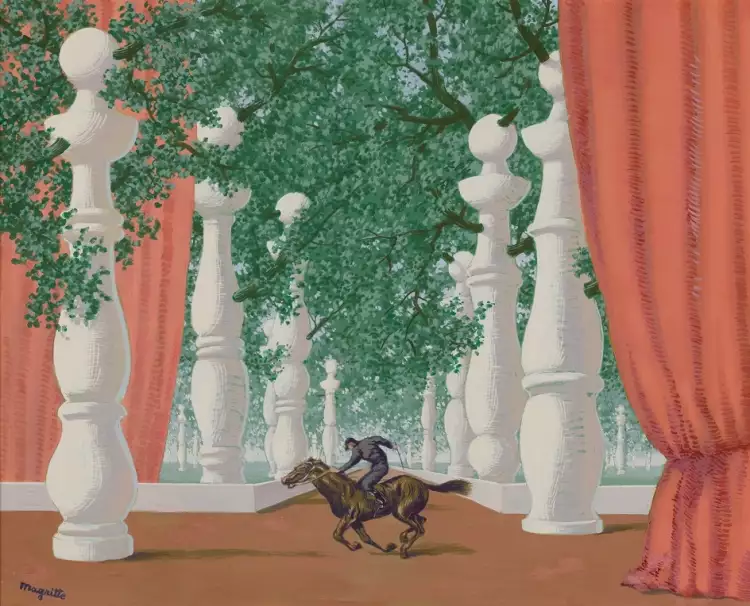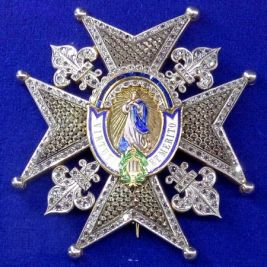
Surrealism is art from the depths of the human subconscious
Surrealism is an avant-garde movement in world visual arts, literature, and cinema of the first half of the 20th century, an influential movement in global culture during the period between the two World Wars. The style is characterized by a paradoxical combination of forms and the use of allusions. Surrealism's followers drew creative energy from the depths of the subconscious, skillfully merging the real and the imaginary in their works.
 Surrealism. Salvador Dalí. The Great Masturbator, 1929
Surrealism. Salvador Dalí. The Great Masturbator, 1929
Unlike many other avant-garde artistic movements, surrealism cannot be considered a fleeting phenomenon in painting. It survived several crises, served as a starting point for the development of visionary art and fantastic realism, and became an integral part of postmodernism.
History of Surrealism
Surrealism emerged as a distinct movement in European art in the 1920s in post-World War I France. André Breton is considered its founder. The precursor of the new movement was the composition "Magnetic Fields," and after the publication of the "Surrealist Manifesto" in 1924, the movement gained a clear program and a recognized leader.
Surrealist motifs were already used in their works by masters of the Renaissance. Hieronymus Bosch's triptych "The Garden of Earthly Delights" is filled with mysterious figures born from the master's imagination. The painting depicts hallucinatory, strange creatures, and complex torture devices.
 Surrealism. Jheronimus Bosch. The Garden of Earthly Delights, 1500-1510
Surrealism. Jheronimus Bosch. The Garden of Earthly Delights, 1500-1510
Giuseppe Arcimboldo's paintings include the phantasmagorical cycles "The Seasons" and "The Four Elements." In them, the artist depicted allegorical portraits of people composed of living and inanimate objects. Salvador Dalí called this Italian painter the father of surrealism.
 Surrealism. Giuseppe Arcimboldo. Spring, 1563
Surrealism. Giuseppe Arcimboldo. Spring, 1563
The immediate predecessor of the "surreal" movement in art was Dadaism. Many representatives of the French school of this nihilistic movement later became surrealists. The significant influence on the formation of this new direction was also exerted by the works of prominent representatives of Symbolism, such as Gustave Moreau and Odilon Redon. Surrealists found scientific justification for their ideas in the philosophy of Friedrich Nietzsche and the works of Sigmund Freud on psychoanalysis.
The first "surreal" exhibition was organized in Paris in November 1925. Around the same time, a specialized journal called "Correspondance" began to be published in Belgium. In 1929, Salvador Dalí moved from Spain to France and joined André Breton's group.
 Surrealism. Max Ernst. The Angel of Hearth and Home, 1937
Surrealism. Max Ernst. The Angel of Hearth and Home, 1937
At the end of the 1920s and the beginning of the 1930s, the movement faced its first serious crisis. The leader's active political stance was the cause of this. André Breton became a staunch advocate of leftist Trotskyist beliefs and joined the French Communist Party. During this time, some surrealists left the movement.
The direction gained worldwide recognition through international exhibitions in London and New York (1936), Tokyo (1937), and Paris (1938). The outbreak of World War II is regarded by many art experts as the end of the organized "surreal" movement.
In the 1940s, the work of the world's most famous representative of the genre, Salvador Dalí, clearly shows an evolution in his views. The artist moved away from strict surrealist norms, and his paintings began to display clear academic traits. The eccentric Spaniard emigrated to the United States and successfully engaged in commercial activities. His works enjoyed great success and sold well.
 Surrealism. René Magritte. The Lost Jockey, 1948
Surrealism. René Magritte. The Lost Jockey, 1948
In the 1960s and 1970s, the public gradually lost interest in surrealism, and the movement dissolved in the second wave of avant-garde art.
Distinctive Features of Surrealism
Surrealists rejected the traditional approach to creating works of art. They acknowledged the supremacy of the subconscious over the conscious mind and considered the freedom of irrational perception of the world to be of utmost importance. Surrealist paintings are easily recognizable by the characteristic features of the movement:
- Abundance of phantasmagorical forms.
- Absurd juxtaposition of reality and subconscious imagery.
- Uncontrolled (automatic) creation of works.
- Provocativeness, a desire to challenge established norms.
- Frequent exploration of erotic and magical motifs.
 Surrealism. Méret Oppenheim. Le Déjeuner en fourrure, 1936
Surrealism. Méret Oppenheim. Le Déjeuner en fourrure, 1936
Many artists often created under the influence of hypnosis, large doses of alcohol, or drugs, attempting to delve deep into the subconscious. They embarked on this risky path to elevate themselves spiritually, free themselves from mundane thoughts, and bestow unique masterpieces upon the world.
Famous Surrealist Artists
There are many renowned masters of the surrealist style in painting, and their stories are fascinating. However, the format of our article only allows for a brief overview of some of them:
- Giorgio de Chirico. His early surrealist works emerged before the official inception of the new movement in painting. The paintings from his metaphysical period had a profound influence on Yves Tanguy and René Magritte.
 Surrealism. Giorgio de Chirico. Mystère et mélancolie d'une rue, 1914
Surrealism. Giorgio de Chirico. Mystère et mélancolie d'une rue, 1914
- André Masson was a prominent representative of automatic drawing style. The artist boldly experimented with techniques and materials, using innovative technologies in his paintings.
 Surrealism. André Masson. Gradiva, 1939
Surrealism. André Masson. Gradiva, 1939
- Wolfgang Paalen the inventor of a new artistic technique called "fumage." This drawing technique involves creating images on canvas or paper using traces of soot from a burning candle.
 Surrealism. Wolfgang Paalen. Les Etrangers, 1937
Surrealism. Wolfgang Paalen. Les Etrangers, 1937
- René Magritte, an unconventional figure in the genre. The artist didn't like being called a surrealist and referred to himself as the founder of a new school - magical realism.
 Surrealism. René Magritte. The Son of Man, 1964
Surrealism. René Magritte. The Son of Man, 1964
- Yves Tanguy never received formal painting training and served as a sailor in the merchant navy in his youth. His works are dominated by maritime landscapes with romantic motifs.
 Surrealism. Yves Tanguy. Oblivion of numbers, 1944
Surrealism. Yves Tanguy. Oblivion of numbers, 1944
- Salvador Dalí is the most famous representative of the genre. He was known for his tremendous productivity and created over 1500 artistic works. Even during his lifetime, he achieved commercial success and even designed the packaging for the world-famous lollipop brand, "Chupa Chups."
 Surrealism. Salvador Dalí. The Face of War, 1940
Surrealism. Salvador Dalí. The Face of War, 1940
Surrealism has left a lasting mark on the history of world art. Paintings by surrealist artists hold an esteemed place in private and museum collections. Follow the links to acquire works from masters of this style in online auctions at Very Important Lot.
 Abstractionism: an inverted painting as a precursor to a new style
Abstractionism: an inverted painting as a precursor to a new style  Texture in Typography: Revitalizing Design with Tactile Sensations
Texture in Typography: Revitalizing Design with Tactile Sensations  Claude Monet: biography, artwork, best paintings of the French Impressionist artist
Claude Monet: biography, artwork, best paintings of the French Impressionist artist  The Order of St. Patrick is the most prestigious Irish distinction
The Order of St. Patrick is the most prestigious Irish distinction  Order of Carlos III is the highest civilian award in Spain
Order of Carlos III is the highest civilian award in Spain  The art of Ancient Greece is an endless source of aesthetic pleasure for descendants
The art of Ancient Greece is an endless source of aesthetic pleasure for descendants  The painting "The Burning of the Houses of Lords and Commons" by William Turner is a dramatic depiction of a historical event
The painting "The Burning of the Houses of Lords and Commons" by William Turner is a dramatic depiction of a historical event  The painting "The Adoration of the Trinity" by Albrecht Dürer - The City of God through the eyes of the artist
The painting "The Adoration of the Trinity" by Albrecht Dürer - The City of God through the eyes of the artist  Caravaggio was a brilliant painter, an art innovator, and a thorough rebel
Caravaggio was a brilliant painter, an art innovator, and a thorough rebel  The painting "The Umbrellas" by Pierre-Auguste Renoir is a masterfully created illusion of black color
The painting "The Umbrellas" by Pierre-Auguste Renoir is a masterfully created illusion of black color